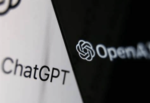Cliosoft recently hosted a webinar where Carl Grace, a scientist from Lawrence Berkeley National Laboratory (LBNL) talked about a cutting edge project for detecting neutrinos. The project is called the Deep Underground Neutrino Experiment (DUNE) project. Many of us know what a neutron is, but what is a neutrino? Before we get to that, here is some background on Cliosoft and some insights into LBNL.
Cliosoft: The company has been serving the semiconductor industry for more than 25 years. Its product offerings fall into three main categories: hardware design data management, IP Reuse and highlighting differences between two designs directly on a schematic or layout. The relevance of Cliosoft to the DUNE project is directly tied to Cliosoft’s Hardware Design Data Management tool suite. This tool suite empowers multi-site design teams to efficiently collaborate on complex hardware designs and the DUNE project is quite a complex one with demanding requirements. The project involves collaboration among LBNL, Fermilab and Brookhaven National Laboratory national labs.
LBNL: Many of us have heard of LBNL but may not be aware of its expertise, excellence and diversity. With 3,500 employees and 1,000 students, it is much larger than many would have imagined. And it has 1,750 visiting researchers. With this much of brain power directed at the physical sciences, computing, biosciences, earth and energy sciences, material and nanotechnologies, it is the most diverse US National Laboratory. It offers the following user facilities for researchers to tap into: Advanced Light Source, National Energy Research Scientific Computing Center, Energy Sciences Network, Joint Genome Institute, Molecular Foundry including National Center for Electron Microscopy. The Lab has 14 Nobel prizes to its credit with the most recent one in chemistry by Prof. Jennifer Doudna (co-discoverer of CRISPR gene editing).
Whether one is in particle physics and/or semiconductors, there is something of interest and value in this webinar. To watch this on-demand webinar, go here.
What is a Neutrino and why study them?
Neutrinos are fundamental particles with very low mass, travel close to the speed of light and interact only through gravity and the weak nuclear force. Neutrinos could help answer questions such as, why is there matter in the universe, do isolated protons decay, how can we witness the birth of a blackhole, etc.,
How to detect Neutrinos?
Neutrinos can travel at almost the speed of light and can pass through 60 light years of water on average before interacting with any matter. This makes it very difficult to detect them. The solution is the DUNE detector, the largest cryogenic particle detector ever made that can detect neutrinos from an intense neutrino beam directed toward it from 800 miles away. A tight neutrino beam is developed when the neutrinos generated by a proton accelerator at Fermilab hit a target. This tight neutrino beam is sent over 800 miles through solid underground rock and earth material to a detector sitting one mile under the ground. This setup prevents cosmic rays from having any impact on the experiment. The detector itself is an extremely large tank filled with liquid Argon. Liquid Argon being very dense provides a lot of targets for the neutrinos to potentially hit. Being chemically inert, Argon does not cause any chemical reactions to disturb the experiment and pollute the collected data.
When a neutrino interacts
When a neutrino interacts with an atom of Argon, the atom is ionized. The freed electron generates an electric charge that travels through the liquid Argon in the tank. The tank is placed under an enormous electric field that drifts this charge on to planes of wires. When the charge reaches those wires, they generate very small currents that can then be recorded. Reading out and digitizing these tiny currents induced in these wires is a key part of the experiment. A key function of the detection electronics is the analog to digital conversion (ADC). Immersing the detector electronics in liquid Argon greatly reduces the cabling capacitance, allowing lower achievable noise, and serves as an enabling technology for DUNE project.
Cold ADC Requirements
- 2MS/s sampling rate per channel and 16 channels at 12-bit resolution
- Sub-LSB noise performance
- 30 years reliability in cold environment (-184oC)
- Operate at both room temperature and cold for testing purposes
Readily available off-the-shelf ADCs cannot meet the above requirements. Custom ADCs need to be built and integrated into ASICs implementing the detection electronics.
Collaboration among teams from the three labs
A small team from each of LBNL, Fermilab and Brookhaven National Laboratory collaborated to design the detection electronics for the DUNE project. With different pieces of the required design IP developed by teams geographically separated, the Cliosoft data management solution enabled an automated design-aware surgical data synchronization. This allowed fine-grained access controls for each participating National lab and provided a way for network storage optimization at each participating site.
Summary
The three-lab team has successfully developed the ColdADC ASICs to instrument the neutrino detector immersed in liquid Argon. Approximately 40,000 ColdADC ASICs will be deployed at the DUNE Far Detector complex and will be immersed in liquid Argon. Each ColdADC will be reading out 16-channels for a total of 640,000 wire channels. The detector electronics can be operated over a 250oC range and have achieved better noise performance than the commercial ADC solution used in the Short Baseline Neutrino Detector (SBND) experiment. The DUNE experiment will be conducted over a 30-year period.
Also Read:
Design to Layout Collaboration Mixed Signal
Webinar: Beyond the Basics of IP-based Digital Design Management







